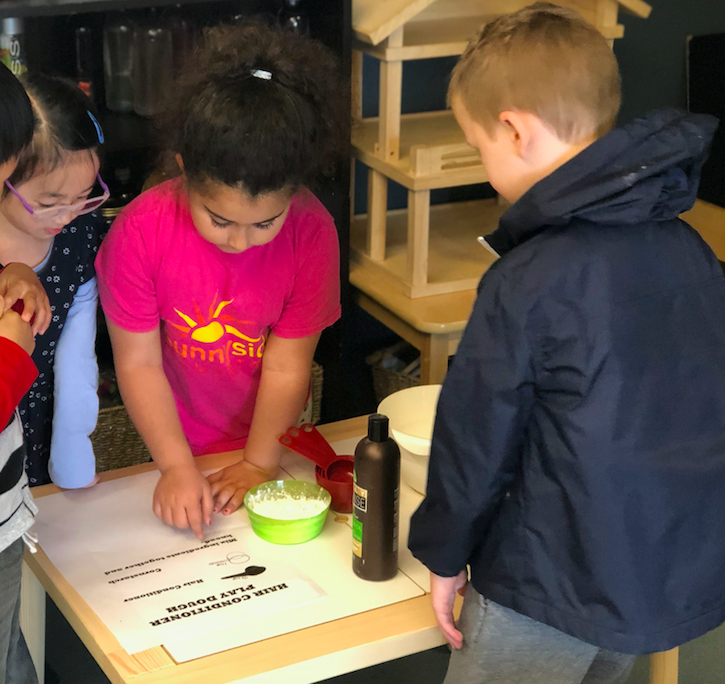Illustration Elements
Illustration Éléments
Context
The Teacher’s Voice:
For this activity, students measured, communicated, read, problem solved, collaborated, and persevered as they created unique dough (mud dough, sand dough, hair conditioner dough, oatmeal dough & coffee dough). Each small group was given a recipe, measuring tools, ingredients, and challenged to work together to create the dough. Before we began, we shared strategies, discussed various ways to problem solve, and talked about how we could rely on our group to help us through any difficulties we may encounter.
Illustration
Activity Photo
Teacher Reflection
This challenge reminded the students of how we have practiced communicating, being resourceful, being imaginative, and being as kind as we can be as we work together. Working through the many obstacles of creating a dough together, our focus was on the group dynamics and how each member was contributing positively to a common goal. This was such a playful and creative way to collaborate. The students were helping one another and working to make sure everyone had a role. They were problem solving to figure out the consistency of their dough and using measuring terminology as they poured and counted. What a beautiful reminder of our co-operative community of young learners!
Student Reflection
Student Reflections on the prompt: How did you contribute to your group? How did your group help one another make dough?
- “We helped each other build the dough. I mixed it up.”
- “In the group when we made it. It was so delicious it makes me happy. We were careful and nice and gentle.”
- “We all had a turn and that is joyful.”
- “We helped each other share turns and then we are happy.”
- “We all took turns pouring the things in and that feels good.”
- “I told them to rub their hands to get some dough and we all took turns.”
- “We listened to each other and we can make something cool.”
- “I helped by helping get the dough off of everyone’s hands so they can get a bigger ball of dough.”
- “We mix the bowl up and all got turn and that makes you happy and feels good.”
- “We made something awesome! First it was slime and then playdoh. When you work together you make something else.”
- “We shared tools and be kind to my partners.”
- “We helped with all the team work. We were fighting about some things but we solved it and made something cool together.”
- “We took turns and that makes people happy and shows kindness.”
- “I was listening to my group and then they have to do something like hold the box.”
- “When I helped my group, we could make something with better smells.”
- “We are a team and I feel good when you work as a team.”
- “I am being very kind to others when I am letting everyone help.”
In familiar settings, I can interact with others and my surroundings respectfully
I can build relationships and work and play cooperatively. I can participate in activities to care for and improve my social and physical surroundings and use materials respectfully. I can solve some problems myself and ask for help when I need it; I listen to others’ ideas and concerns. I can be part of a group, and invite others to join. I can identify when something is unfair to me or others
In familiar settings, I communicate with peers and adults.
I talk and listen to people I know. I can communicate for a purpose. I can understand and share basic information about topics that are important to me, and answer simple, direct questions about my activities and experiences
In familiar situations, I cooperate with others for specific purposes.
I contribute during group activities, cooperate with others, and listen respectfully to their ideas. I can work with others for a specific purpose.
